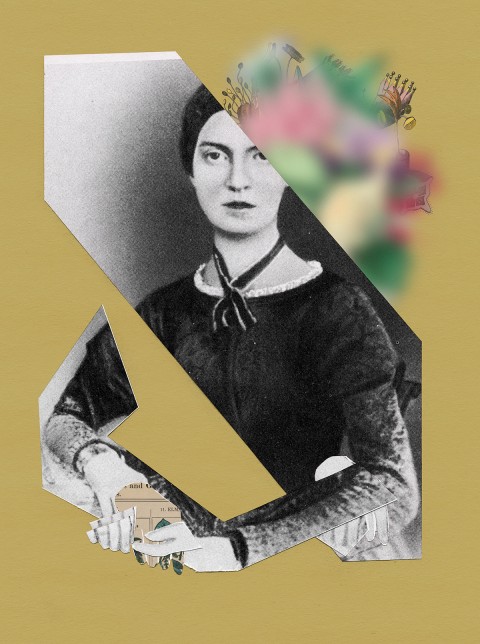
(Illustration by Matt Dorfman)
Even as a nine-year-old, the precocious Emily Dickinson had a special love of botany. To use a technical word like botany might seem a stretch when considering a mere child. But not for this poet-to-be. A fiery fascination lit up her widening glimpses of New England vegetation and bird lore and ground life. Though I’ve read Dickinson and read about her for years, I never knew this—not till I stumbled across Judith Farr’s scholarship and the recently back in print Emily Dickinson Face to Face, a biography by the poet’s niece Martha Dickinson Bianchi. For all my admiration of Dickinson’s vivid images, I didn’t realize how inseparable her writing was from the scenes and sounds of the natural world around her.
Her classroom fascination soon sunk its fingers in real dirt. “My plants grow beautifully,” she announced to a friend at age 11. At 12 she began tending the family garden. And tend she did! Bianchi remembers “carpets of lily-of-the-valley and pansies, platoons of sweet peas, hyacinths enough in May to give all the bees of summer dyspepsia.” That’s not counting the peony hedges and waves of daffodils and “marigolds to distraction—a butterfly utopia.”
More than the sense of sight was enlisted here. Dickinson sowed flowers with special scents, too, writing that she “could inhabit the Spice Isles merely by crossing the dining room to the conservatory, where the plants hang in baskets.” Her “delicious ripe figs,” tricky to grow, received mention in the local paper. She didn’t just plant and prune, either. Over the years she compiled a 66-page leather-bound collection of preserved flowers (an herbarium, it was called). She ended up with 424 pressed flower specimens that she had collected, labeled, and classified.




